Parrots of the Plains
Parrots love grasslands. Some make a living exclusively on the ground in grassland habitat. They’ll perch in the same palm trees as Burrowing Owls, dig cavity nests into termite mounds, and forage alongside wallabies down in the grass. Let’s talk about the diversity and ecology of grassland parrots.
Australian Grassland Parrots
Australia is packed full of parrots, easily more than Africa and Asia combined, and many of them not only use grasslands but live on the ground in those grasslands. Even familiar birds like the Galah preferred savannas before European occupation.
Australia has so many parrots that live in savannas, including the Red-rumped Parrot or “Grass Parrot,” Northern Rosellas, and so many more. We recommend looking at Australian sources to further explore the birdlife in this country, but here’s a summary of our favorites.
Eastern Ground Parrot
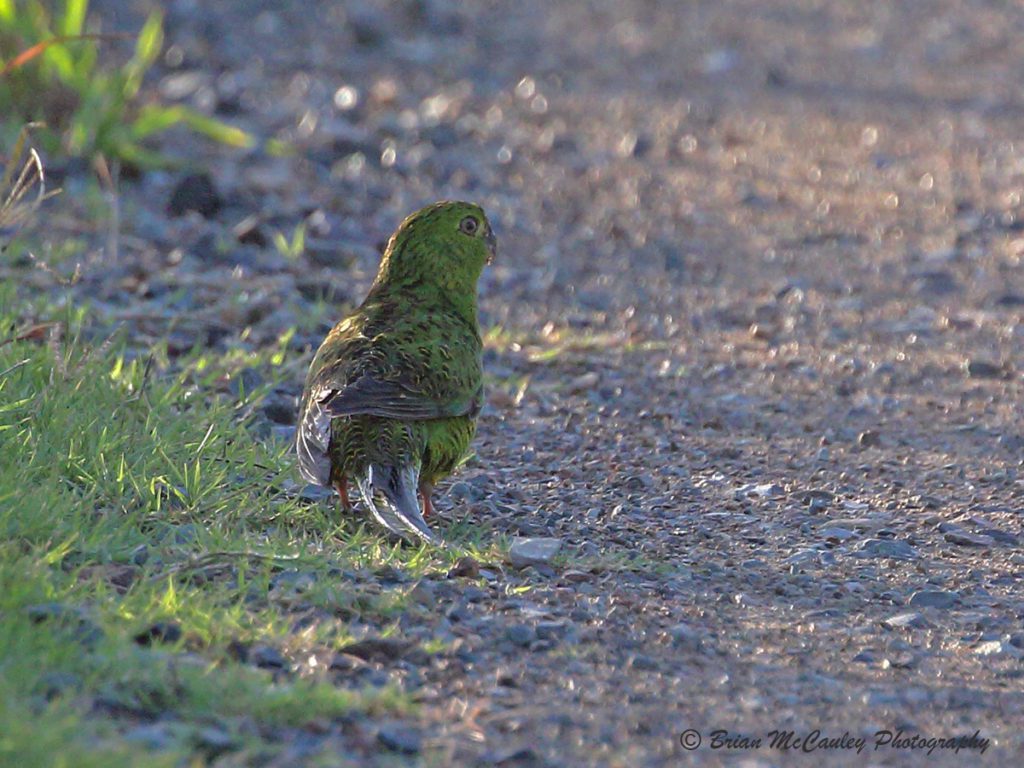
The Eastern Ground Parrot is one of only five species of ground-dwelling parrot in the world. Picture an agile little parrot running along the ground, weaving through the grasses and plucking up fallen seeds. That’s the secretive lifestyle of this bird, which only occasionally climbs shrubs or stems of grass to collect seeds out of reach.
This parrot’s nest is also incredibly unique; instead of a hollow cavity in a stump or mound, the ground parrot weaves a nest from grasses, which it builds under the protection of shrubs or deep vegetation.
Listening is the best way to find this bird, and thankfully its calls are fairly distinct.
Turquoise Parrot
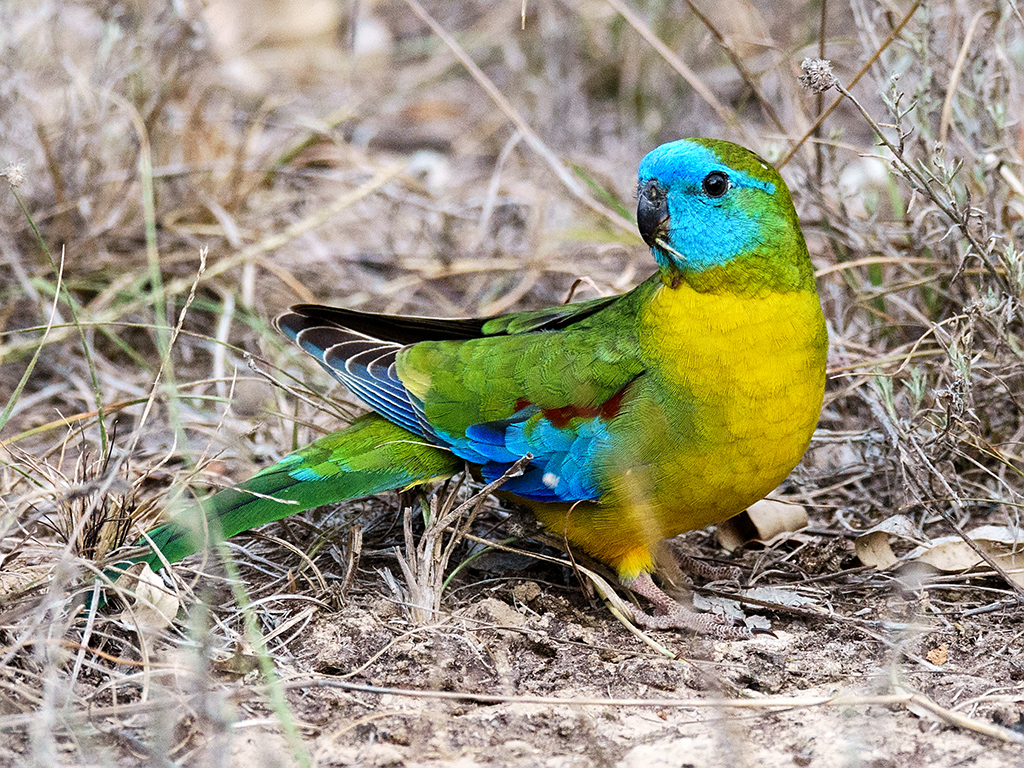
This “grass parakeet” doesn’t dwell on the ground strictly like the ground parrot, but it sure loves grasses.
These quiet birds forage on the ground for seeds of grasses and shrubs, and South Wangaratta calls them an “unobtrusive bird.” Habitat loss in the 1920s put them at serious risk, but today the Turquoise Parrot can be found abundantly in most of its previous range.
Because they nest in tree cavities, they’re usually found in open areas with adjacent trees. They’re a common sight on farms in their range.
They carry grasses to their tree-cavity nest by tucking grass leaves into their tail. (Squeal.)
Galah
This familiar cockatoo lived only in the open plains of Australia before European occupation, making it a stellar icon of grassland parrots. It’s a bird that benefitted from expansion of developed landscapes and deforestation, and has since spread throughout Australia–even to the coasts.
They’re commonly seen in roadsides, parks, cropland, feeding on seeds and grazing on the ground. It’s doing fine compared to other birds, but its primary threats include heat stress, which continue to worsen with climate change, and vehicle mortality.
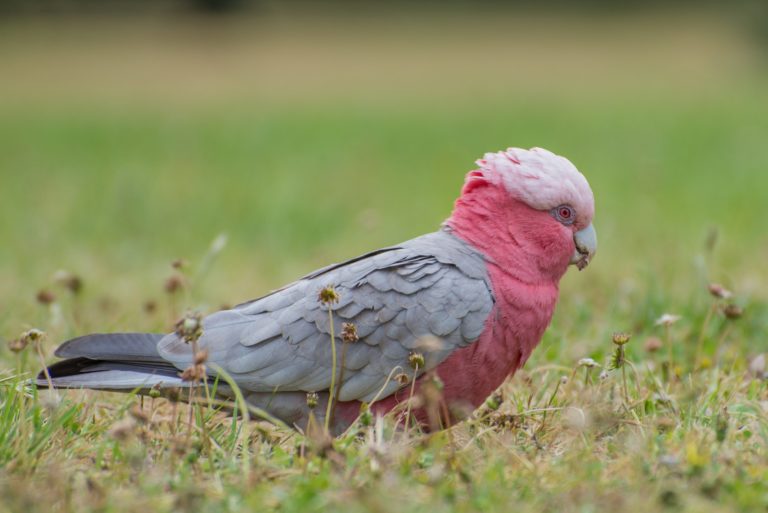
Alwal (Golden-shouldered Parrot)
This endangered savanna endemic, a treasured totem of the Olkola People, nests in termite mounds. With the encroachment of woody plants because of inappropriate burning, their predators like feral cats and the Pied Butcherbird are making survival difficult.
Groups like Bush Heritage Australia are working with the Olkola Aboriginal Corporation to secure the future of this bird. As one of Australia’s most endangered birds, and one that depends on grasslands to thrive, managing its future means appropriately protecting and managing its grassland home.
The path toward landscape-scale habitat improvement includes reinstating Olkola traditional fire regimes, continuing nest site surveys, and developing sustainable pastoralism.
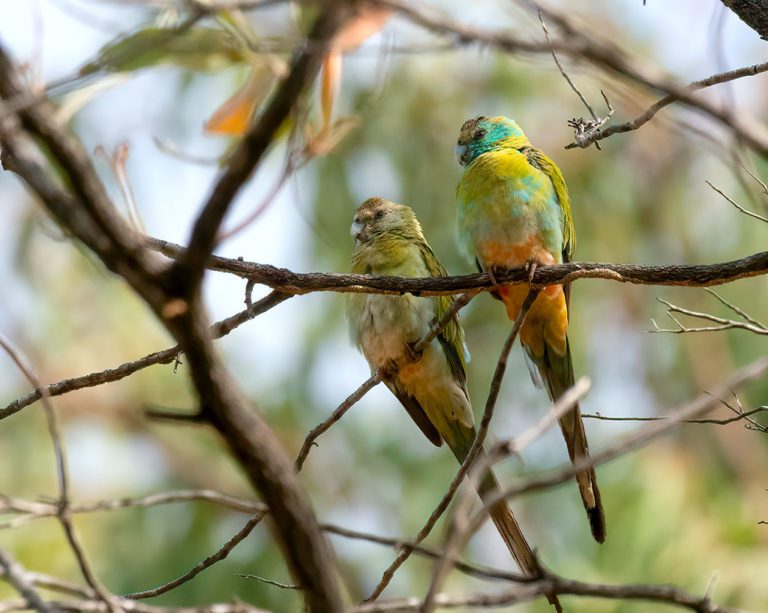
Hooded Parrot
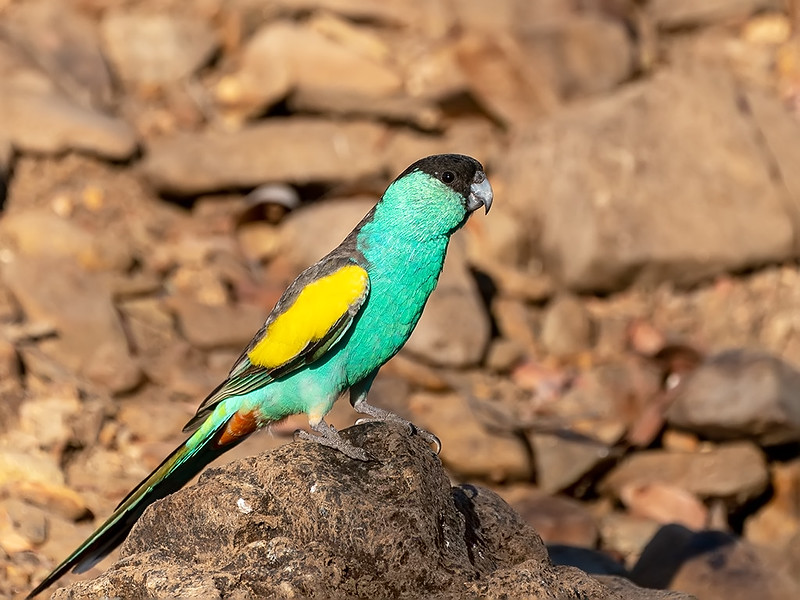
Like the Golden-shouldered Parrot, this bird nests in termite mounds on the savanna. Their range is shrinking, but they’re well off compared to the other termitaria-dwelling parrot of Australia.
American Grassland Parrots
The Americas are known for their tropical tree-dwelling parrots. They have an enormous number of parrot species, including some grassland parrot specialists in South America.
North America had one parrot, the extinct Carolina Parakeet, whose range overlapped with the Great Plains. Records placed it living in woodlands, but little is known about the ecology of this long-gone parakeet.
South America’s often orchard-like savannas like the Cerrado are frequented by parrots. Blue and yellow macaws, peach-fronted parakeets, and other familiar species avoid the deep humid rainforests and frequently flock to the savannas.
The parrots below are more specialized; choosing to live in savannas over other habitat types.
Red-shouldered Macaw (Little Maracana)
This smallest macaw can be confused for a large parakeet. While it lives in a variety of habitats, it prefers lowlands, savanna, and swamplands. It nests in hollow trees and arboreal termitaria.
Yellow-faced Parrot
Near Threatened, the Yellow-faced Parrot is a unique bird threatened by habitat loss in the agriculturally-suitable Cerrado of Brazil. It’s the only member of the genus Alipiopsitta, and its origins likely stretch back to the original emergence of open landscapes in central South America.
Compared to other parrots in its area, the nomadic Yellow-faced Parrot avoids forests and prefers open habitats and savanna, where it feeds on fruits and seeds, including unripe guava and mango.
With the expansion of agriculture, they’ve begun feeding more on cultivated plants, putting themselves into a pest-like position in their shrinking range.
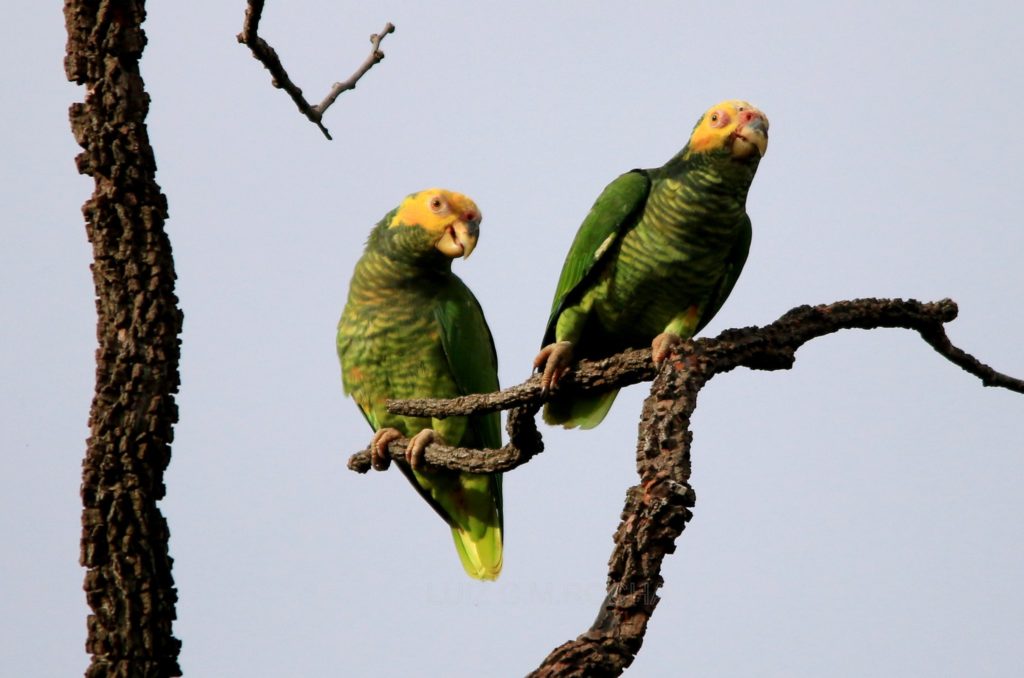
Yellow-chevroned Parakeet
A sturdy little parakeet that loves disturbed habitat – so much that it now calls places like Rio de Janeiro and Miami home. Favoring open habitats and savannas, it seems to love developed areas and towns. This helpful trait gets it started when it’s set loose in new regions, making it a wildly successful example of grassland parrots. (To the detriment of other ecosystems.)
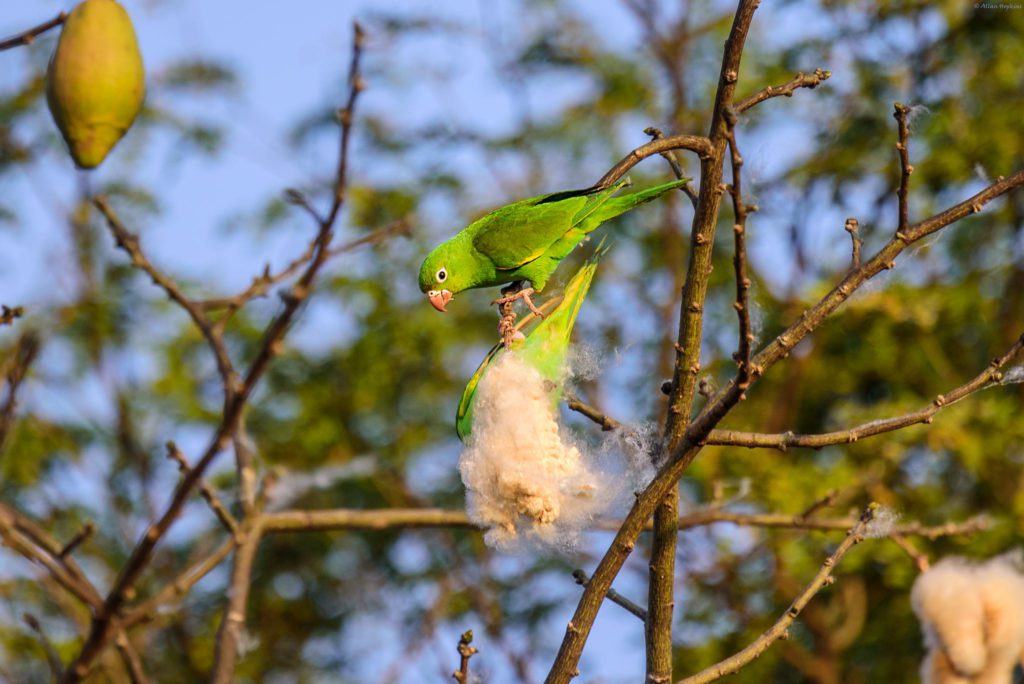
Blue-throated Macaw
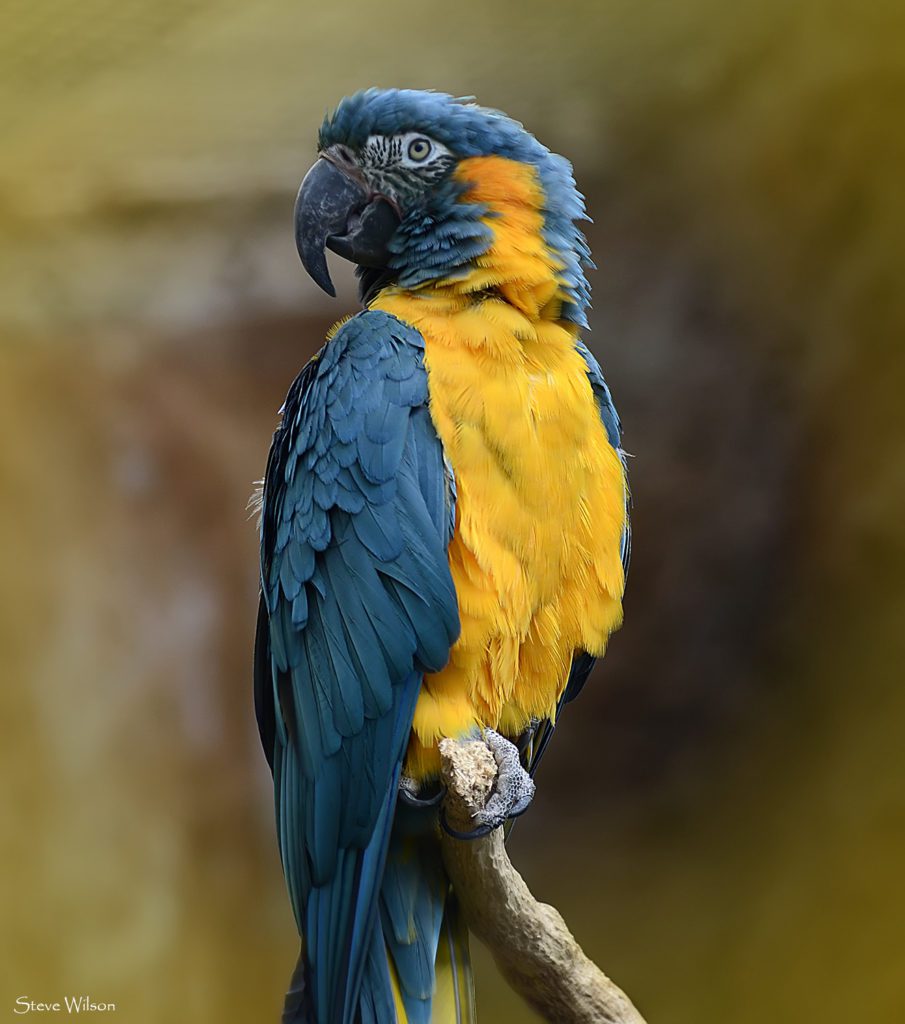
How often do you see Burrowing Owls and macaws hanging out together? All the time in Los Llanos de Moxos. The critically endangered Blue-throated Macaw (“barba azul” in Spanish) specializes in living in palm islands on this expansive seasonally flooded plain. Protecting these savannas also protects Buff-breasted Sandpipers and other familiar shorebirds.
Barba Azul Nature Reserve, operated by Asociación Armonía, is working to conserve the Blue-throated Macaw and other Beni savanna species.
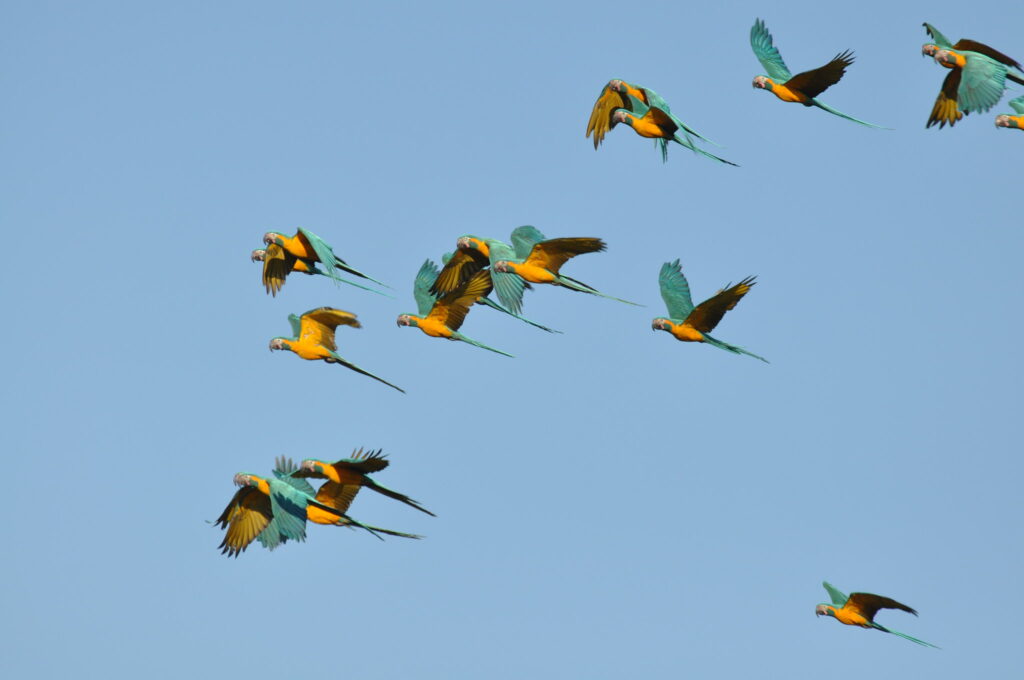
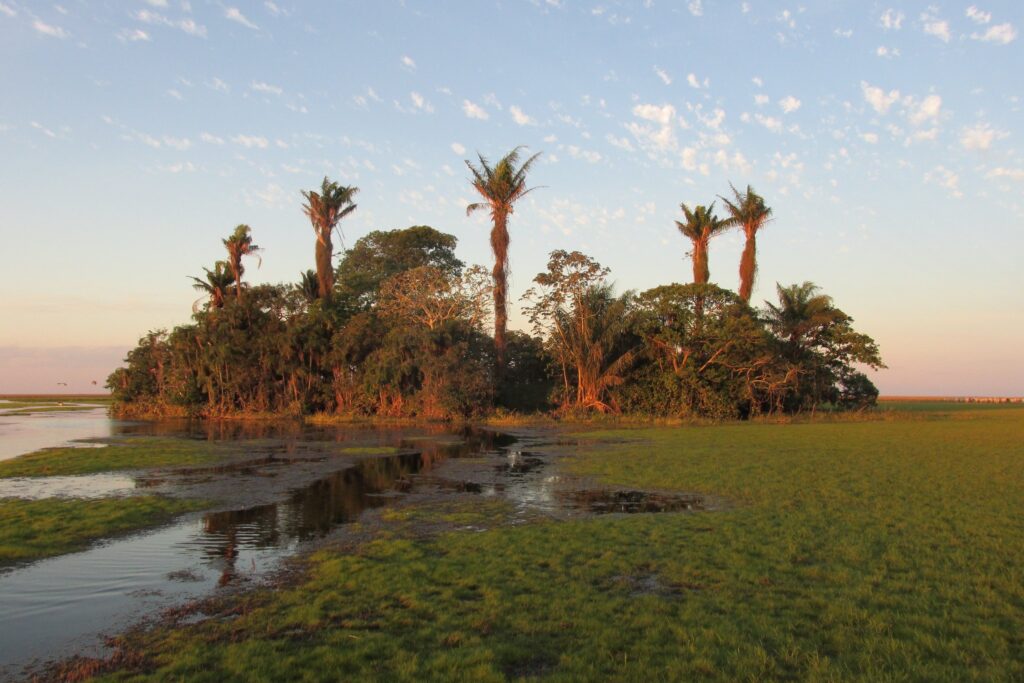
African Grassland Parrots
Rüppell's Parrot (Bloupenspapegaai)
This nomadic near-endemic savanna parrot lives in Namibia and Angola. Its range is fairly restricted, and it seems to prefer Namibian Escarpment vegetation types, dry steppe and thornveld, and Acacia woodlands. It’s often seen around rivers and streams.
Its primary threat is heavy trapping for the caged bird trade, and having a restricted range puts it at risk too. Though their numbers are decreasing, Bloupenspapegaai’s status is Least Concern for now.
Masked Lovebird
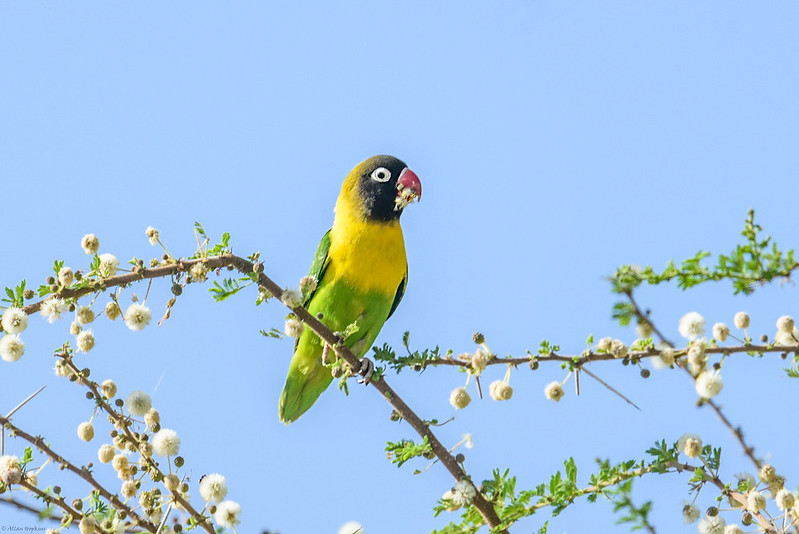
These little crop pests live primarily in grassland or lowland savannas. They’re partial to Baobab and Acacia, so if you find them in wooded areas it’s probably full of those trees.
Masked Lovebirds (Agapornis personatus) are 25% more likely to carry a microsporidian parasite, Encephalitozoon hellem, than other birds. Neat?
Black-winged Lovebird
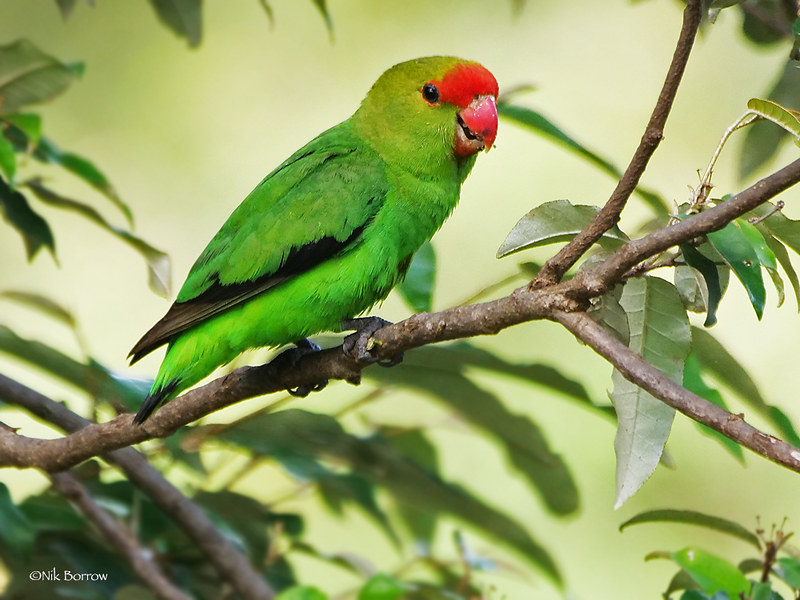
This fortunate lovebird (Agapornis taranta) is seeing a population increase because local habitat degradation is creating new habitat suitable for them. They love broad-leaved tallgrass savanna and Acacia savannas with short grass.
Unlike some lovebirds, Black-winged Lovebirds aren’t common pets.
Sources/Further Reading:
- Animal Diversity Web
- Bianchi, Carlos. (2009). Notes on the ecology of the yellow-faced parrot (Alipiopsitta Xanthops) in central Brazil. ORNITOLOGIA NEOTROPICAL. 20. 479-489.
- Smith, B., & Editor, S. (2016, September 16). Endangered Cape YORK ALWAL: OLKOLA struggle to rescue Golden-shouldered parrots. Retrieved from https://www.smh.com.au/technology/endangered-cape-york-alwal-olkola-struggle-to-rescue-goldenshouldered-parrots-20160915-grgqky.html
- Imbler, S., (2019, December 12). We now know the real range of the extinct carolina parakeet. https://www.audubon.org/magazine/winter-2017/we-now-know-real-range-extinct-carolina-parakeet
- Southern African Bird Atlas Project
- BirdLife Australia
- ICUN Redlist
- Wiki Aves – A Enciclopédia das Aves do Brasil
- World Parrot Trust
- Egwumah, P. O., Agbelusi, E. A., & Egwumah, F. A. (2014). The distribution, abundance, and habitat preference of lovebirds Agapornis pullaria in Tiortyu riparian vegetation. Journal of Applied Biosciences, 76. doi:10.4314/jab.v76i1.7
- Bush Heritage Australia
- Environmental Protection Agency, & Tropical Savannas CRC (Eds.). (2002). Birds of the savannas. Tropical Topics, 73. Retrieved from https://www.wettropics.gov.au/site/user-assets/docs/73BirdsOfTheSavanna.pdf
Did you spot an error or have questions about this blog post? Just want to rave about parrots? Email Rachel Roth.

